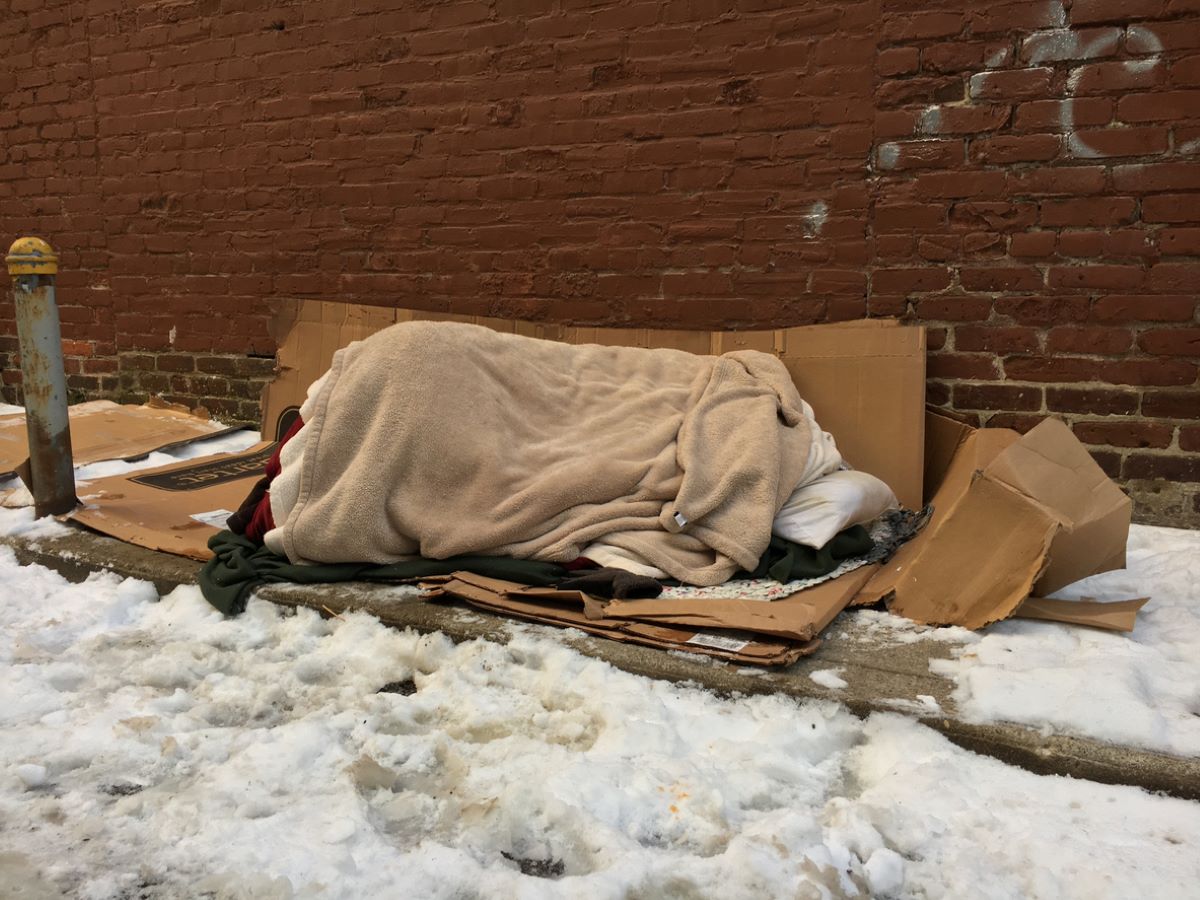Twelve books into Homer’s Odyssey, the unfortunate protagonist Odysseus and his men must navigate the straits between Scylla and Charybdis. Scylla is a six-headed monster who, when ships pass, swallows one sailor for each head. Charybdis is an enormous whirlpool that threatens to swallow the entire ship. As he and his men keep their ship far from the whirlpool, the heads of Scylla swoop down and decapitate six of the sailors.
Talk about being stuck between a rock and a hard place! Ancient Greek mythology is so charming. Homer’s Odyssey and homelessness have precious little in common. So, when there is crossover, it deserves contemplation. Neither obstacle that lay ahead of Odysseus was a particularly good one. A classic lose-lose scenario that ended up costing lives.
Homeless people often face the same lose-lose dilemma when choosing between life in shelters or on the street. What should be an obvious choice is becoming increasingly difficult, and many are opting for the latter. What factors are at play here? How can shelter usage improve?
Safety First – Realities and Perceptions
As an example of the extremes that homeless people are willing to take to avoid shelters, consider Toronto, Canada. With winter temperatures frequently dipping below zero, the decision to stay outdoors would seem unjustifiable. However, that’s exactly what Barb and her partner decided to do. “It’s safer out here. There’s no bugs. No one’s going to beat you up or steal your s***.” Their tentmate agreed, citing an additional reason. “I can leave my stuff here when I go work and know it won’t be stolen.”
Safety is a paradoxical, yet recurring theme when explaining why people are opting for the streets. “The shelters, they’re very dangerous,” said Chibi. “I got my nose broken, my eyes blackened. I was in the hospital three times. Once I got stabbed.” Eyrish echoed his sentiments, recounting an evening he spent in All Saints recently: “It’s chaos in there, man. I froze last night, and my phone got stolen.” The All Saints Church drop-in center in Toronto, although warmer than the -18 C outside, is still a chilly place. The old church walls are barely able to keep the cold at bay. On any given night, the shelter can take in upwards of 100 people. Services are limited: three toilets, one sink, a doorless washroom.
Early 2016 witnessed a rash of fatal violence in several New York shelters.
A young man fatally slashed the throat of his roommate in an East Harlem shelter. Another man slashed his roommate after an argument at the Samaritan Village Men’s Shelter in Midtown. Manhattan’s 30th Street Men’s Shelter, home to nearly 900 homeless men, witnessed a Brazilian man being garroted to death. One resident of Manhattan’s 30th said that “security ain’t where they should be. They’re at their post on their phones or standing by the stairs talking to each other.” An older man described the unique dangers that more senior residents face. “Young punks pick on old guys like me, and they can because there are no cameras. Security don’t do anything.”
Previous years in New York shelters showed similarly violent patterns. There were 962 critical incidents in shelters in 2014, up from 927 in 2013, as the population in shelters swelled to 59,000 from 47,000.
Drugs and Disease
Another safety concern is the prevalence of drug availability and usage in shelters. For those wanting to get clean, life in shelters can be tantamount to poking the bear. “It’s basically drug central. So, I’m like, ‘No way.’ I’d rather go find a stairwell or something.” When shelters are impediments to detoxification, something is systemically wrong.
Similarly, indicative of the problem is the perception of shelters among homeless people. In a Canadian study that analyzed perspectives of homeless individuals on their health and healthcare needs, participants described shelter life as promoting spread of disease and lacking privacy. Violence was perceived as being rampant in shelters, leading to constant fear among residents. This is enlightening, as even where shelters implement more stringent safety measures, the perceived lack of safety in shelters may well lead to many opting for the cold embrace of the street.
Clearly much work needs to be done to improve conditions in shelters. Fears of violence, theft, a lack of privacy, spread of disease, and the prevalence of drug availability and usage combine to create a cocktail of predisposing factors that prevent needy people from using the very services that have been developed to help them.
Improving Shelter Conditions
Some shelters have made good changes in order to improve safety in their residences. As a result of the violence in New York shelters in recent years, guarded entrances, metal detectors and an X-ray machine have been installed. A sign near the entrance reminds residents that “assaulting social services personnel is a felony punishable by up to 7 years in prison.”
We should applaud these changes as they appear to be doing much good in curbing violence. But when shelter safety is left up to the state rather than a federal level of oversight, conditions can vary dramatically from region to region. And this shouldn’t be the case. Both shelter residents and workers deserve to be safe, regardless of the state they happen to live/work in.
Another emerging trend see women, underrepresented by homeless figures, being far less likely to use shelters. A study conducted in Colorado Springs revealed that while 37% of homeless individuals in that area are women, they make up less than 25% of shelter residents. Why the gender disparity among shelter users?
Springs Rescue Mission offers this insight: “Vast majority of homeless women are victims of physical abuse or sexual violence (up to 70% of homeless women are victims of domestic violence, and 41% are sexual assault victims).” When viewed through this lens, it comes as little surprise that homeless women don’t feel comfortable staying in co-ed shelters.
What Can Be Done?
Female commentators in the article quoted above suggest overhauling the model of homeless shelters to provide single-room occupancy. “My issue with homeless shelters per se is the lack of individual space, no privacy,” stated Sheila. “These dorm style shelters are no good, but they keep building the same model. Bring back the single room occupancy model and charge say ten dollars a night. See how that works out.”
Colleen agreed this would help eliminate her major obstacle in using shelters: “My main problem as a woman in a homeless shelter with men is that they relentlessly hit on me. It hurts my soul.” Of course, it does. When what should be a refuge becomes predatorial, we have clearly lost the plot.
Odysseus, our protagonist mentioned at the outset, had an impossible choice in front of him. He lost six men while trying to navigate between two obstacles. When choosing between life in dangerous shelters and rough sleeping on the street, many homeless people face a similarly difficult decision. How many more lives will be lost as they try to navigate between a rock and a hard place?












